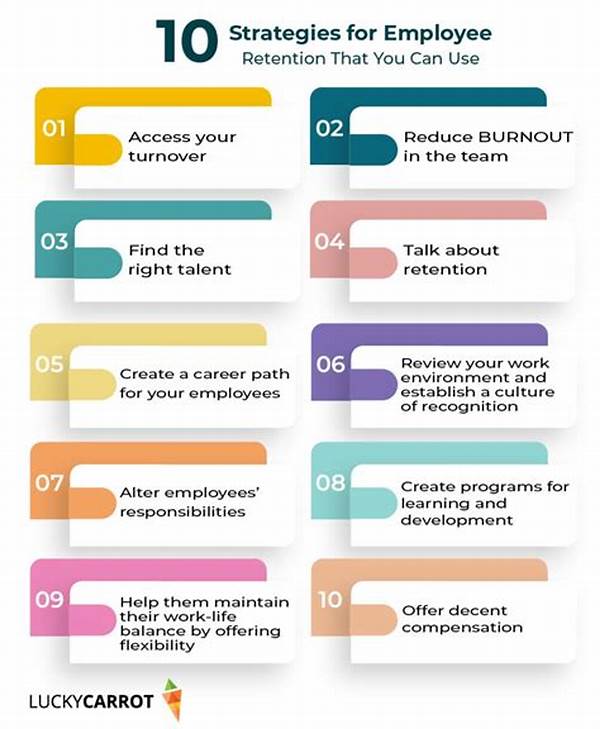Hey there, fellow business enthusiast! Today, we’re diving into a topic that’s more relevant than ever: employee retention through wellness strategies. If you’re running a business, you know how crucial it is to keep your team happy and healthy. With the right approach, you can create a workplace where people not only want to work but want to stay for the long haul. Let’s explore how focusing on wellness can make your company a top choice for employees.
Read Now : Lavish Beachfront Experiences For Lovers
Creating a Culture of Wellness
Building a culture of wellness isn’t just about providing a gym membership or organizing yoga sessions—it’s about integrating health into your company’s core values. When employees feel valued and healthy, they perform better and are less likely to seek opportunities elsewhere. One effective approach is to offer holistic wellness programs that address physical, mental, and emotional health. This might include mental health days, stress management workshops, or flexible work hours that accommodate a balanced lifestyle.
Moreover, leadership plays a significant role in employee retention through wellness strategies. When leaders prioritize their team’s wellbeing, it creates an environment where employees feel supported and appreciated. Recognize and reward wellness achievements within your team, and you’ll likely see an improvement in morale and productivity. Keep it light and fun while providing resources and incentives for employees to engage in wellness activities. The aim is to show your team that their health is your priority.
Innovative Wellness Strategies You Can Implement
1. Flexible Work Schedules: Providing flexible working hours promotes employee retention through wellness strategies. It helps employees manage their personal and professional lives better, reducing stress.
2. Health and Fitness Programs: Offering gym memberships or sponsoring fitness classes keeps employees physically active, contributing to overall wellbeing.
3. Mental Health Support: Regular mental health check-ins and access to counseling services can enhance employee satisfaction and loyalty.
4. Work-Life Balance Initiatives: Encourage vacations and time-off to ensure employees rest and recharge, aiding employee retention through wellness strategies.
5. Nutrition and Lifestyle Workshops: Educational sessions on nutrition and healthy living can empower employees to make healthier choices in their daily lives.
The Role of Leadership in Wellness
Leadership style can significantly affect the success of employee retention through wellness strategies. When leaders genuinely promote and participate in wellness initiatives, it sends a strong message to the workforce. Proactive steps from management can include budgeting for wellness programs and facilitating an open dialogue about health goals.
Leaders should also lead by example by participating in wellness programs themselves. This not only motivates employees but also reinforces the importance of wellbeing across the board. Taking steps such as integrating wellness into performance reviews is another great way to show your commitment to a healthy workplace. Remember, consistency in promoting wellness can transform your company culture and increase employee loyalty.
Read Now : Boutique Overwater Villa Vacations
Measuring the Success of Wellness Programs
Ensuring the success of employee retention through wellness strategies involves setting measurable goals. Metrics such as employee engagement surveys, turnover rates, and absenteeism can provide insights into the effectiveness of your initiatives. A decrease in stress-related leaves and higher job satisfaction scores can indicate that your wellness strategies are working.
Evaluate feedback from employees regularly to refine and improve your programs. Sometimes small tweaks, like changing the timing of activities or adding more diverse wellness options, can make a huge difference. Remember, it’s not just about creating wellness initiatives but about making them resonate with and meet the needs of your employees.
Overcoming Challenges in Implementing Wellness Strategies
Adopting employee retention through wellness strategies comes with its own set of challenges. One major hurdle can be budget constraints. It’s essential to demonstrate the return on investment when pitching wellness initiatives to stakeholders—a healthier, happier workforce often translates to increased productivity and decreased turnover.
Another challenge might be employee buy-in. Ensure that your wellness programs are tailored to fit the interests and needs of your workforce. This involves asking for employee input and adapting to feedback. Maintaining transparency about the purpose and benefits of wellness strategies can encourage more participation, leading to a more cohesive and healthier work environment.
The Future of Workplace Wellness
Looking ahead, the trend of employee retention through wellness strategies is set to grow. As people become more health-conscious, businesses must evolve to meet these needs. Technology will play a pivotal role, with tools such as fitness trackers and wellness apps becoming integral to workplace wellness programs.
Expect to see a rise in personalized wellness initiatives that use data to cater to individual health needs. Sustainable practices and mindfulness will also take front stage, as companies aim to create not just a productive workforce but a resilient one. In summation, the investment in wellness strategies is shaping the future of work, making it more inclusive, balanced, and focused on employees’ overall wellbeing.



